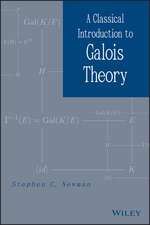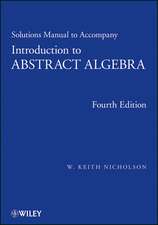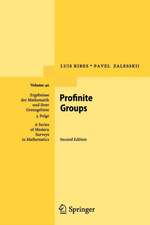Linear Algebra and Probability for Computer Science Applications
Autor Ernest Davisen Limba Engleză Hardback – 2 mai 2012
After an introductory chapter on MATLAB, the text is divided into two sections. The section on linear algebra gives an introduction to the theory of vectors, matrices, and linear transformations over the reals. It includes an extensive discussion on Gaussian elimination, geometric applications, and change of basis. It also introduces the issues of numerical stability and round-off error, the discrete Fourier transform, and singular value decomposition. The section on probability presents an introduction to the basic theory of probability and numerical random variables; later chapters discuss Markov models, Monte Carlo methods, information theory, and basic statistical techniques. The focus throughout is on topics and examples that are particularly relevant to computer science applications; for example, there is an extensive discussion on the use of hidden Markov models for tagging text and a discussion of the Zipf (inverse power law) distribution.
Examples and Programming Assignments
The examples and programming assignments focus on computer science applications. The applications covered are drawn from a range of computer science areas, including computer graphics, computer vision, robotics, natural language processing, web search, machine learning, statistical analysis, game playing, graph theory, scientific computing, decision theory, coding, cryptography, network analysis, data compression, and signal processing.
Homework Problems
Comprehensive problem sections include traditional calculation exercises, thought problems such as proofs, and programming assignments that involve creating MATLAB functions.
| Toate formatele și edițiile | Preț | Express |
|---|---|---|
| Paperback (1) | 347.92 lei 6-8 săpt. | |
| CRC Press – 14 oct 2024 | 347.92 lei 6-8 săpt. | |
| Hardback (1) | 494.34 lei 6-8 săpt. | |
| CRC Press – 2 mai 2012 | 494.34 lei 6-8 săpt. |
Preț: 494.34 lei
Preț vechi: 655.57 lei
-25% Nou
Puncte Express: 742
Preț estimativ în valută:
94.60€ • 99.22$ • 78.75£
94.60€ • 99.22$ • 78.75£
Carte tipărită la comandă
Livrare economică 01-15 aprilie
Preluare comenzi: 021 569.72.76
Specificații
ISBN-13: 9781466501553
ISBN-10: 1466501553
Pagini: 431
Ilustrații: Illustrations
Dimensiuni: 191 x 235 x 28 mm
Greutate: 0.93 kg
Ediția:1
Editura: CRC Press
Colecția A K Peters/CRC Press
ISBN-10: 1466501553
Pagini: 431
Ilustrații: Illustrations
Dimensiuni: 191 x 235 x 28 mm
Greutate: 0.93 kg
Ediția:1
Editura: CRC Press
Colecția A K Peters/CRC Press
Cuprins
MATLAB. LINEAR ALGEBRA: Vectors. Matrices. Vector Spaces. Algorithms. Geometry. Change of Basis, DFT, and SVD. PROBABILITY: Probability. Numerical Random Variables. Markov Models. Confidence Intervals. Monte Carlo Methods. Information and Entropy. Maximum Likelihood Estimation. References. Notation. Index.
Notă biografică
Ernest Davis is a computer science professor in the Courant Institute of Mathematical Sciences at New York University. He earned a Ph.D. in computer science from Yale University. Dr. Davis is a member of the American Association of Artificial Intelligence and is a reviewer for many journals. His research primarily focuses on spatial and physical reasoning.
Descriere
Assuming as little mathematical background as possible, this classroom-tested text focuses on mathematical techniques that are most relevant to computer scientists. It covers applications from computer graphics, web search, machine learning, cryptography, and a host of other computer science areas. After an introductory chapter on MATLAB®, the text is divided into two sections, with the first focusing on linear algebra and the second discussing probability. MATLAB functions, MATLAB programming assignments, and problems are included in each chapter. MATLAB code is available on the author’s website.










